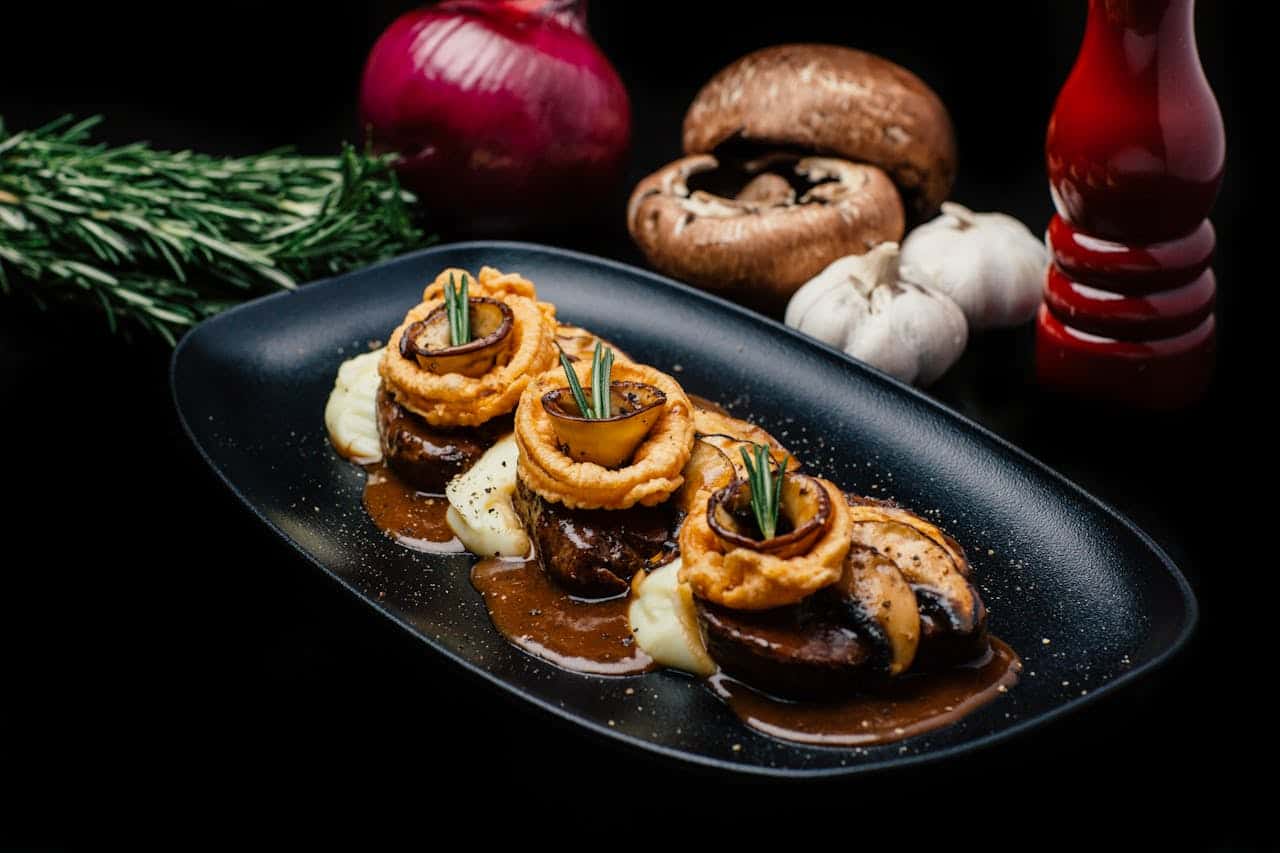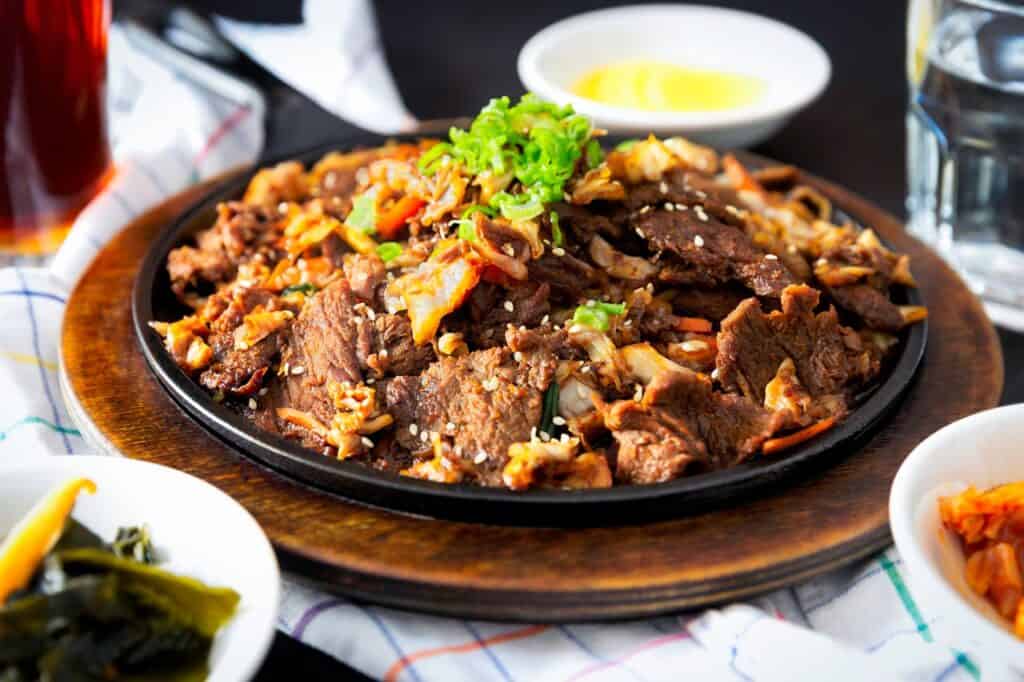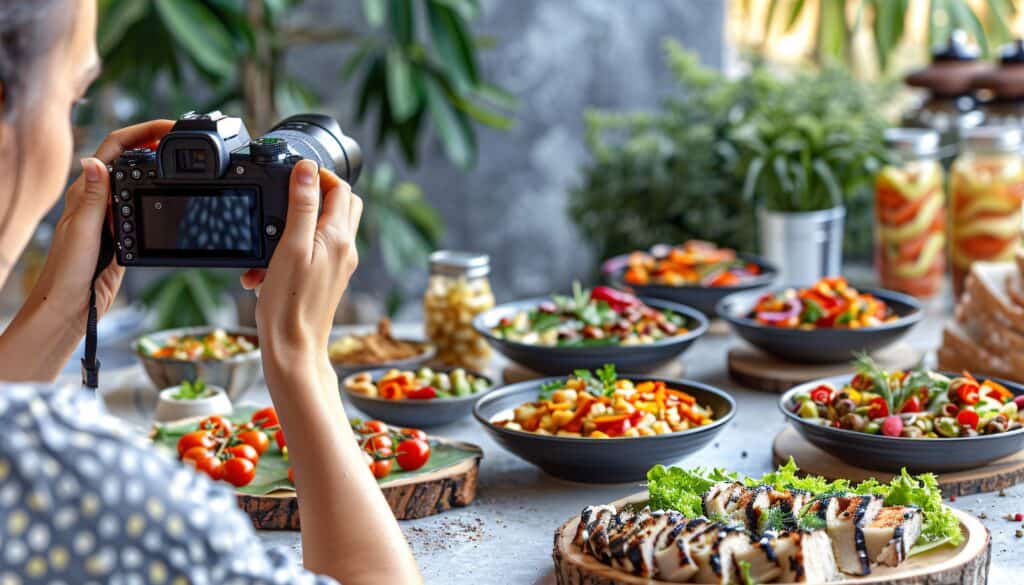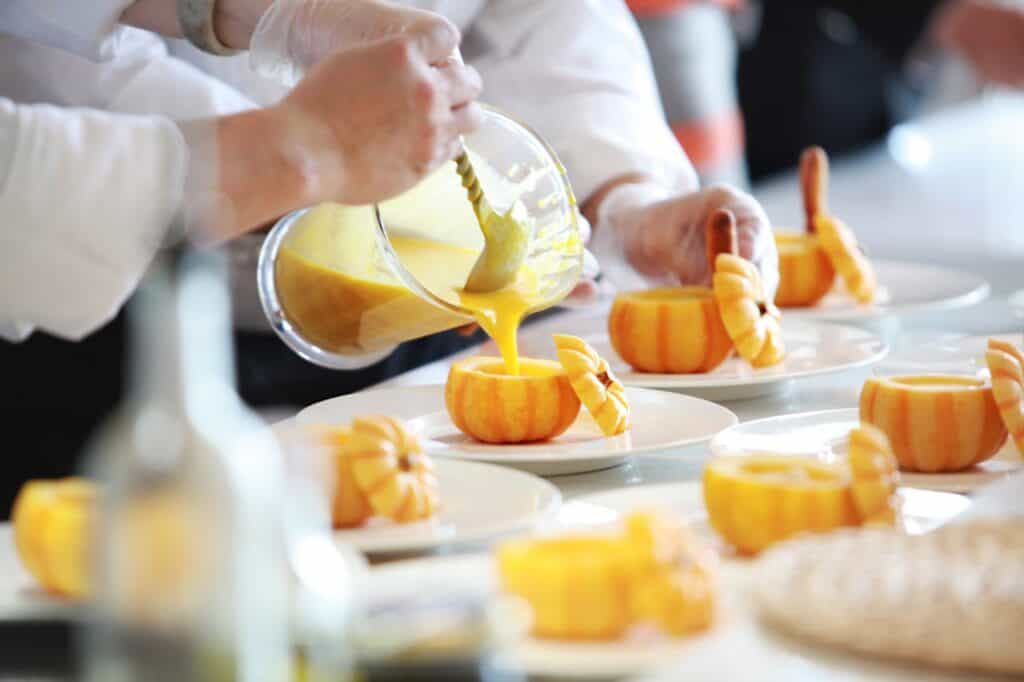
By Jermaine Thomas March 12, 2025
Food is now about the experience, the beauty, and the visual appeal rather than just the taste. Before it even reaches the taste buds, a dish that is exquisitely plated can transform a simple meal into a remarkable culinary masterpiece. In the catering business, being an expert in food presentation is essential because it builds a strong brand image and increases customer satisfaction. Creating dishes that are both aesthetically pleasing and delicious is a goal for caterers.
The Importance of Food Presentation in Catering
Food presentation is more than just arranging ingredients on a plate—it’s an essential part of the dining experience. When guests attend a catered event, whether it’s a wedding, corporate gathering, or private party, they expect a high level of elegance and sophistication in both taste and aesthetics. Catering aesthetics play a crucial role in setting the mood and ensuring that guests remember the meal long after the event is over.
First Impressions Matter
People eat with their eyes first. Studies have shown that a well-plated dish is perceived as more flavorful, even if the ingredients remain the same. The visual aspect of food creates anticipation and excitement, making the dining experience more enjoyable.
Social Media Influence
With the rise of Instagram, TikTok, and Pinterest, food photography has become a key factor in catering success. Guests love sharing beautifully plated dishes on their social media, providing free promotion for caterers. An Instagram-worthy plate not only impresses customers but also attracts potential clients.
Enhancing the Dining Experience
A carefully arranged plate enhances the whole dining experience, even beyond social media. A dish’s colors, textures, and composition can all improve how flavors are experienced. Plate design can help diners understand how to enjoy a dish, making the meal more engaging and fulfilling.

The Principles of Gourmet Plating
Gourmet plating involves more than just placing food on a plate—it requires careful thought and creativity. Here are some fundamental principles that caterers follow to create stunning food presentations:
1. Balance and Harmony
A well-balanced plate should have a variety of colors, textures, and shapes. Too much of one element can make the dish look monotonous. Combining crispy, creamy, and smooth textures with vibrant colors creates an enticing presentation.
2. Color Contrast
Vibrant and contrasting hues improve aesthetic appeal. To add color, caterers use edible flowers, fresh herbs, and vibrant sauces. A dish can be elevated from ordinary to extraordinary with a drizzle of deep red beet puree or a burst of green from basil.
3. Negative Space
Leaving some empty space on the plate prevents overcrowding and highlights the key components of the dish. This minimalist approach allows each element to stand out without looking cluttered.
4. Height and Dimension
Adding height and layers to a dish creates a more dynamic and eye-catching presentation. Stacking ingredients or using garnishes strategically can add depth and sophistication to the plate design.
5. Plate Selection
When it comes to food presentation, plate type is very important. Because they offer a blank canvas that highlights the food, white plates are frequently used. For a dramatic effect, plates that are black, ceramic, or have unusual shapes can also be utilized.
Techniques Caterers Use for Visual Appeal

Caterers employ various techniques to ensure their dishes look as impressive as they taste. Some of the most popular techniques include:
The Rule of Thirds
Borrowed from photography and design, the rule of thirds suggests that the plate should be visually divided into three sections. Placing food along these imaginary lines rather than in the center creates a more appealing and balanced composition.
Sauce Artistry
Sauces are not just for flavor—they’re also for decoration. Caterers use squeeze bottles, brushes, and spoon drizzles to create artistic patterns with sauces. Whether it’s a delicate swirl, a bold streak, or tiny dots, sauces add a touch of elegance to any dish.
Microgreens and Edible Flowers
One common method to improve food presentation is to use edible flowers and microgreens. In addition to adding color, these delicate garnishes offer new flavors that enhance the dish.
Deconstructed Dishes
Rather than presenting food in its traditional form, deconstructed dishes separate the components in an artistic way. This modern plating technique adds intrigue and allows diners to experience different flavors individually before combining them.
Layering and Stacking
The plate gains depth and height when ingredients are layered. Proteins, for instance, look more organized and tasteful when stacked on top of grains or vegetables. In elegant dining settings, this method is particularly effective for gourmet plating.
The Role of Catering Aesthetics in Different Events
Food presentation in catering varies depending on the type of event. Different occasions call for unique approaches to plating and catering aesthetics.
Weddings
Weddings demand luxurious and elegant plating that matches the theme of the event. Caterers often use pastel-colored garnishes, gold leaf accents, and intricate plate designs to complement the romantic ambiance.
Corporate Events
A more sophisticated and expert approach to plating is necessary for corporate events. Sleek lines, monochromatic color palettes, and elegant dish arrangements are typical of minimalist designs.
Casual Gatherings
For casual gatherings, plating tends to be more relaxed and playful. Rustic wooden boards, colorful salads, and interactive food displays create a welcoming and informal dining experience.
Themed Parties
Caterers can showcase their culinary creativity at themed events. The plating style can be changed to fit the theme of the event, whether it’s a futuristic dinner, a tropical luau, or a vintage tea party.

How Caterers Achieve Consistency in Plate Design
Consistency is key in catering. With large-scale events, ensuring that every plate looks identical requires skill and precision. Caterers achieve this by:
- Using Molds and Rings: These help create uniform shapes for proteins, vegetables, and side dishes.
- Pre-Plating Components: Arranging certain elements in advance speeds up the plating process while maintaining consistency.
- Training Staff: Well-trained staff ensure that every dish meets the same high standard of presentation.
- Maintaining a Workflow: An organized plating station with a clear assembly line helps caterers deliver beautiful dishes efficiently.
Conclusion
A crucial component of catering is the art of food presentation, which turns meals into aesthetically spectacular events. Caterers add creativity and accuracy to each dish they serve by employing sophisticated plating techniques and striking a balance between colors and textures. Making Instagram-worthy food presentations is more crucial than ever in a time when social media greatly influences dining experiences.
Caterers can impress guests, improve the dining experience, and create a lasting impression by becoming experts in gourmet plating, catering aesthetics, and visual appeal. A beautifully presented dish is a true work of art that pleases the eyes and the palate, whether it is served at a wedding, business function, or informal get-together.